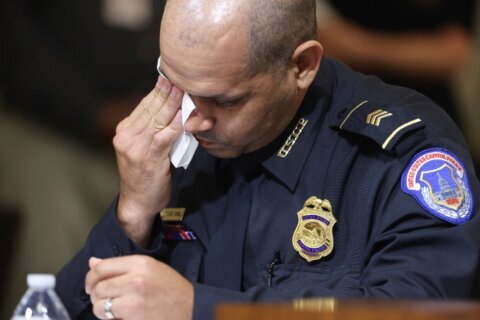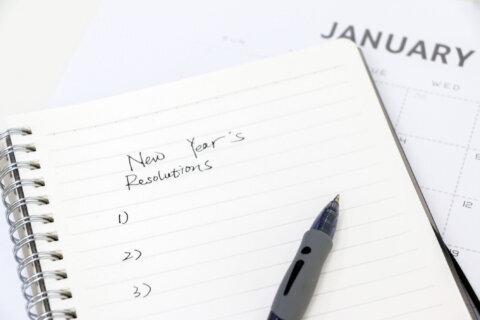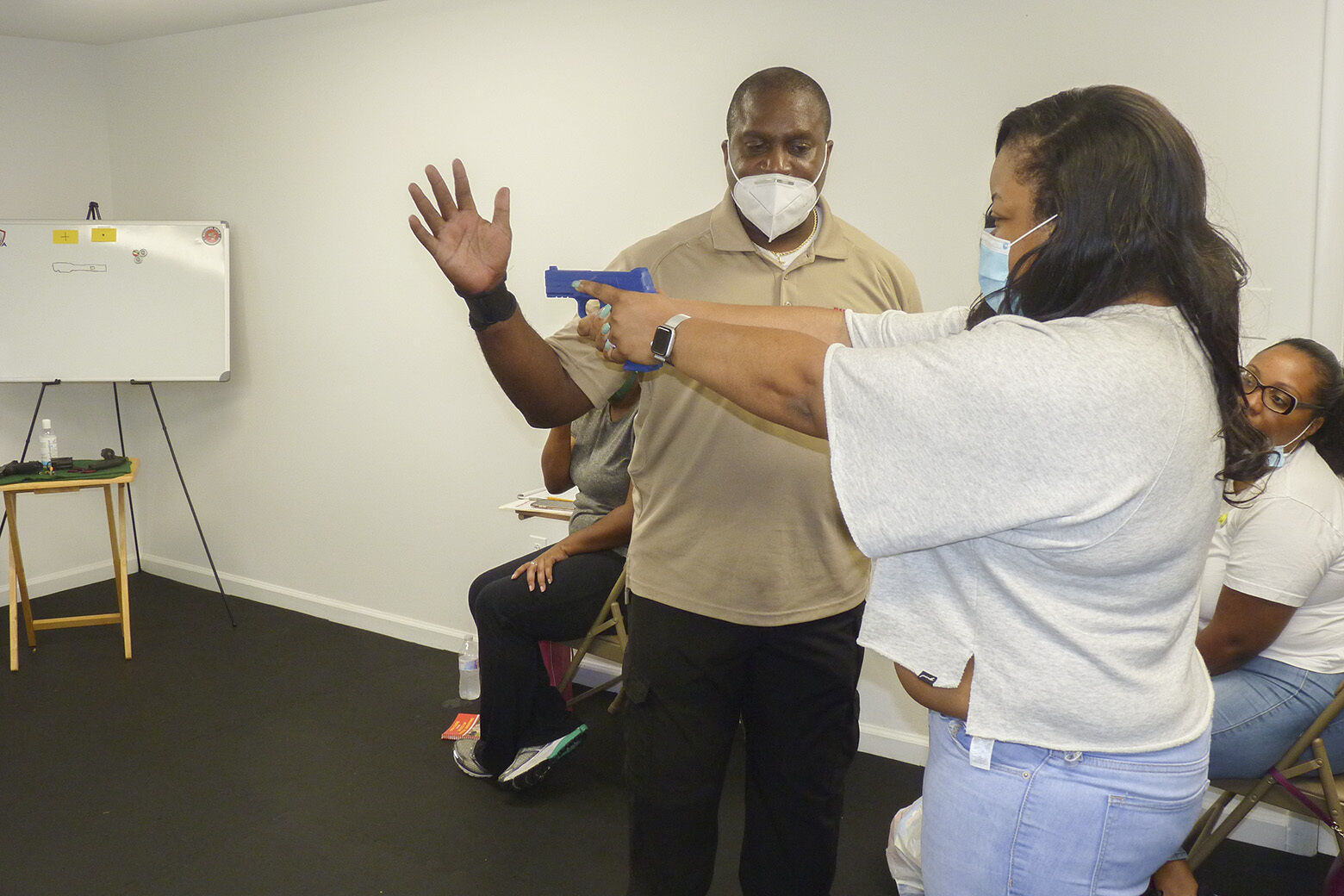
The sounds of gunfire ringing through her Southeast D.C. neighborhood had always kept Neta Vaught away from firearms. To her, guns symbolized the violence that the mother of three worked so hard to shield her family from — the violence that has Vaught regularly coming across dead bodies and kept her from giving her two teenagers the childhood she wanted.
But after witnessing the national temperature rise over the past few months, between the COVID-19 pandemic and ongoing protests against police brutality, Vaught felt she needed to reconsider her self-defense options. She decided it was time to beat her fear of firearms, get training and purchase her first gun.
“As a single mom, I don’t feel as protected anymore, and I want to be able to protect my children,” Vaught said.
She wondered whether the police would still be able to help her during an emergency after a mid-June police union poll found that nearly 75% of D.C.’s police force would consider resigning in light of proposed cuts to the department. Meanwhile, homicides are up 15% from this time last year.
She signed up for a course on using a pistol with D.C.-based Barnes 1st Step Firearms Training, hoping to shake her fear of guns by learning about them.
Cedric Barnes, who works in private security and is a special police officer-firearms instructor with D.C. police, runs the business with his wife, Kelly Latimer, and with help from his brother, Rod Barnes, who is a certified range officer.
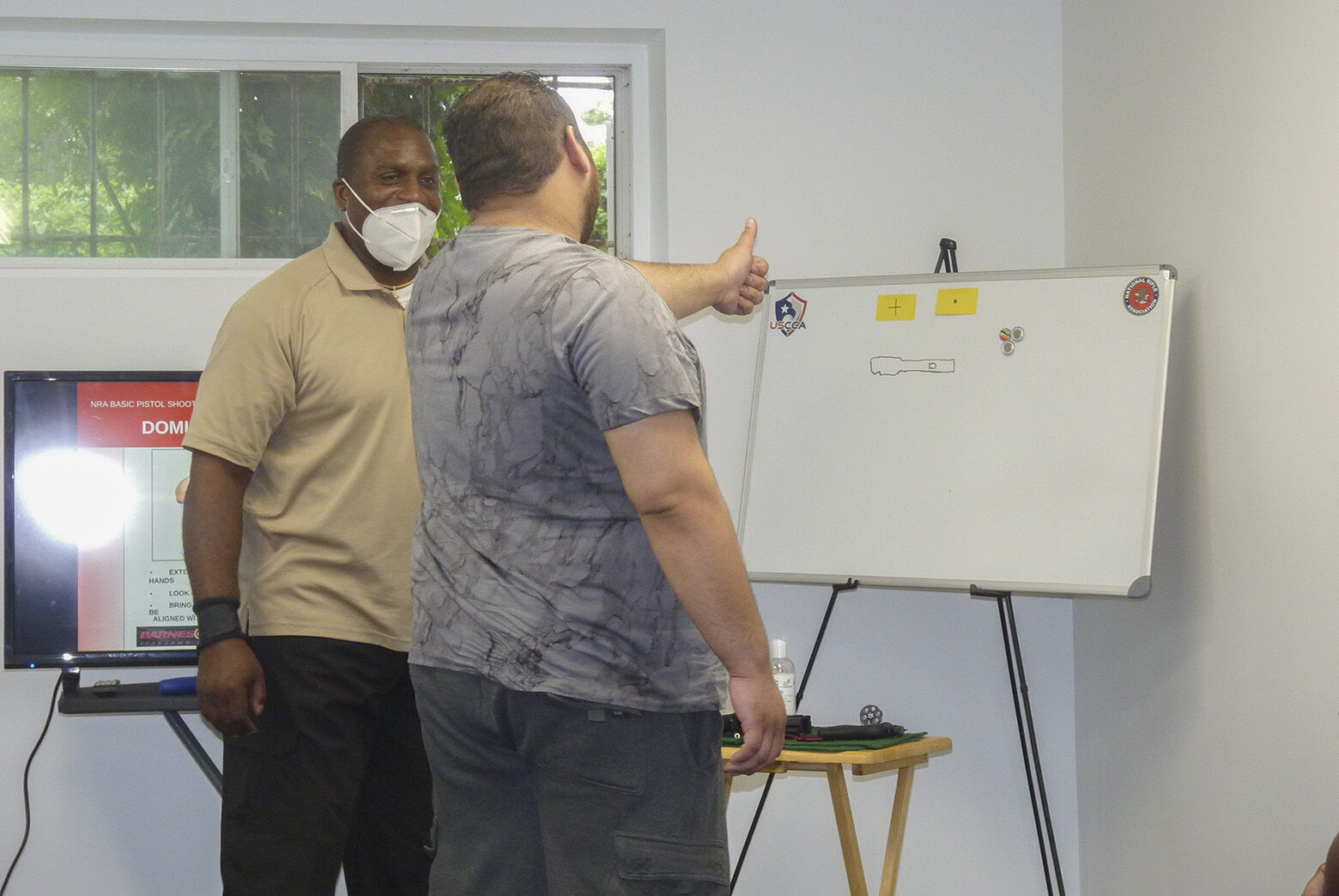
Before the COVID-19 pandemic, Latimer said that Cedric Barnes would sometimes hold classes with one or two students; on some weekends, he didn’t teach the course at all. Now, Latimer said, calls are constantly coming in for both the pistol fundamentals and concealed carry training courses.
Under normal circumstances, Barnes caps the classes at six people in order to keep everyone engaged. Pandemic precautions forced him to shrink it to four, making the basement of his Southeast D.C. home where he holds his lessons a bit more spacious. Latimer said that pistol training classes are booked through October.
Women were in the majority for the pistol training course on June 20, a trend that Cedric Barnes said has gone up along with the demand for his classes.
Barnes isn’t the only one who’s seeing that. Gun shop owners and trade groups told WTOP new gun ownership is surging in the area, and the growth isn’t coming from the demographic groups that represented most gun owners in the past.
Noticing new faces
“I’m a 47-year-old white guy that lives in the suburbs of Washington, D.C.,” said Mark Oliva, the director of public affairs for the National Shooting Sports Foundation, but he added that today’s gun owner doesn’t necessarily look like him.
The NSSF, a trade association that represents gun makers, said that 40% of those who purchased a gun were first-time owners based on estimates from gun shop owners they spoke with in June.
In an August follow-up to the June survey, retailers told the foundation that 40% of those new gun owners were women. NSSF also said that 58% of firearm purchases were among African American men and women — the largest increase of any demographic group.
Nearly 5 million Americans were estimated to have purchased their first gun in 2020, according to the foundation.
That finding jibes with gun consumers’ gradual shift toward a diverse, younger and more urban demographic, according to Oliva. It’s cutting into the traditionally higher rate of rural gun owners who, on top of reasons for self-defense, live closer to hunting grounds and gun ranges that have made purchasing a firearm for recreational uses more common.
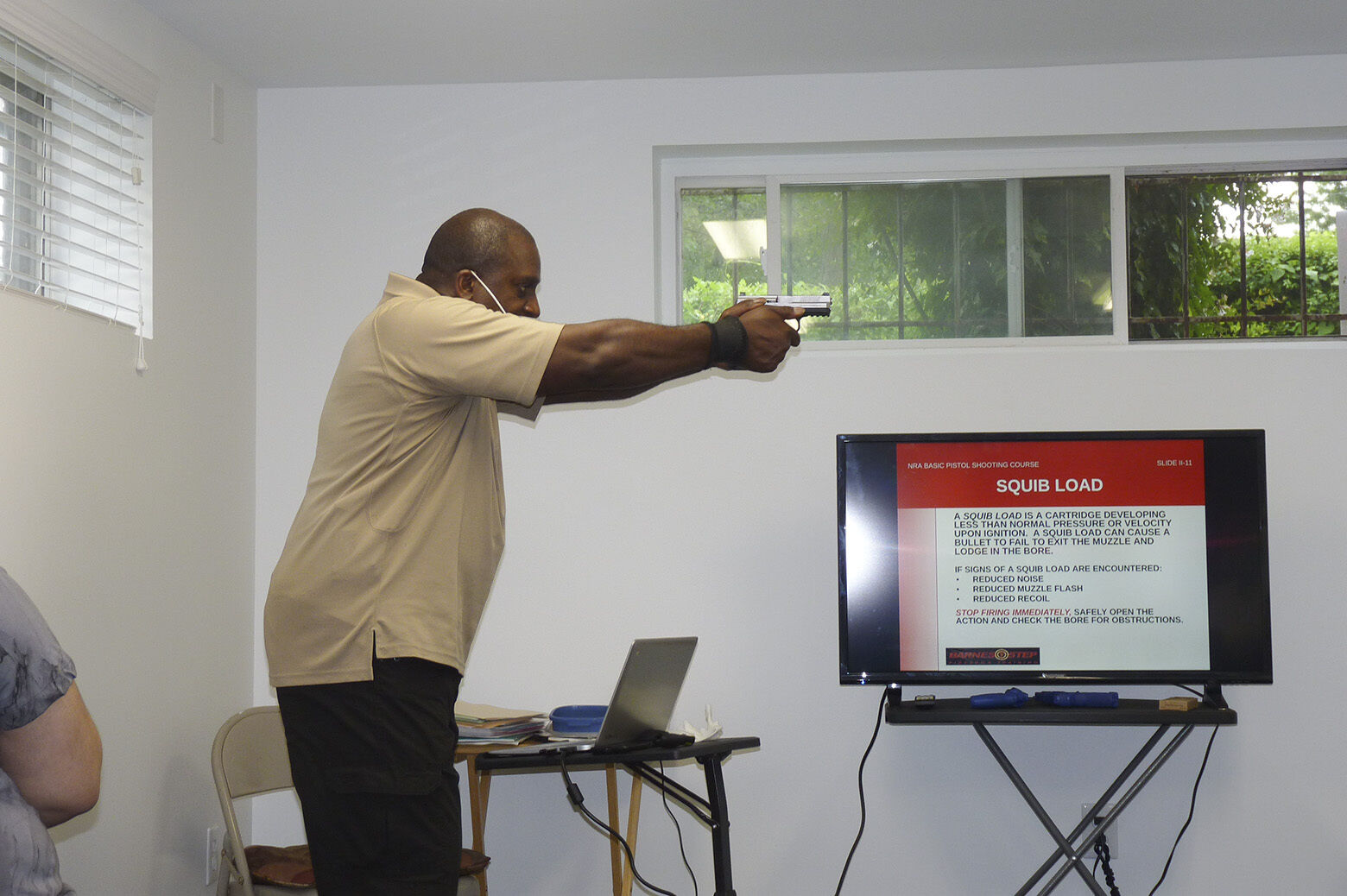
Oliva pointed out that women have comprised the fastest-growing segment of the gun-buying market for several years, and that trend has only accelerated thus far in 2020.
Shawn Poulin, owner of NOVA Armory in Arlington, Virginia, said purchases have been dependent on what ammunition is in stock, because it’s in such high demand.
“We have actually been told ‘Just sell me anything you have ammo for,’” Poulin said.
Drew Begley, retail manager at Virginia Arms Company in Manassas, Virginia, said that stores hadn’t seen this kind of spike in sales since the ‘90s, which he speculated was in response to new legislation targeting assault weapons. But, even then, Begley said, it was previous gun owners fueling the jump in sales.
“It’s a lot of people that are buying guns for the very first time — really, handling firearms for the very first time,” Begley said.
Gun sales have seen a massive surge locally and across the country ever since COVID-19 became an everyday concern in mid-March.
FBI background checks are used as a weathervane to gauge the direction of gun sales before harder data becomes available. This year witnessed three months with most background checks since the database started in November 1998, with June’s 3.9 million, March’s 3.7 million and July’s 3.6 million. The next closest is December 2015 with 3.3 million.
This trend is being felt locally as well. From March to August of this year, compared with 2019, regional background checks have jumped 121.2% in D.C., 111.5% in Maryland and 91.7% in Virginia.
Small Arms Analytics & Forecasting, a research firm that covers the economics of guns, estimates national gun purchase numbers based on raw data from the FBI’s background check system.
The two hottest months for gun sales came recently, according to the firm, with June’s 145.3% increase followed by July’s 134.6% increase. August showed the first signs of a cooldown nationally, with only a 57.8% increase in sales year-over-year — the lowest percentage bump since the pandemic set in in the spring.
However, the firm said the estimated 15 million guns sold this year has already exceeded 2019’s total. According to the FBI’s data, D.C. also witnessed its largest bump in gun purchases for August, with the 1,541 background checks performed on District residents nearly doubling the previous high of July’s 898.
And that’s in spite of the region’s relatively tight gun laws.
In both Maryland and D.C., weapons must be registered with the police; background checks are mandatory on private sales, and residents are required to get firearms training before their purchase.
Virginia’s gun laws were the most lax until a wave of new legislation enacted July 1 brought the commonwealth closer to parity with its regional neighbors. Expanded background checks for all gun sales (as opposed to those only with licensed firearms dealers); a one-a-month gun-purchase limit, and a requirement for in-person training to receive a concealed carry permit are all the law in Virginia.
“A lot of people across all walks of life are realizing they have a right to defend themselves, and they’re taking responsibility and they’re taking action on that right,” Oliva said.
So, what’s behind this flood of new gun owners?
Experts and gun shop owners alike are saying a sense of personal safety has been upended as the COVID-19 pandemic destabilized economic and health security, and the killing of George Floyd in Minneapolis police custody sparked ongoing protests against police brutality and racial injustice that have turned violent at times.
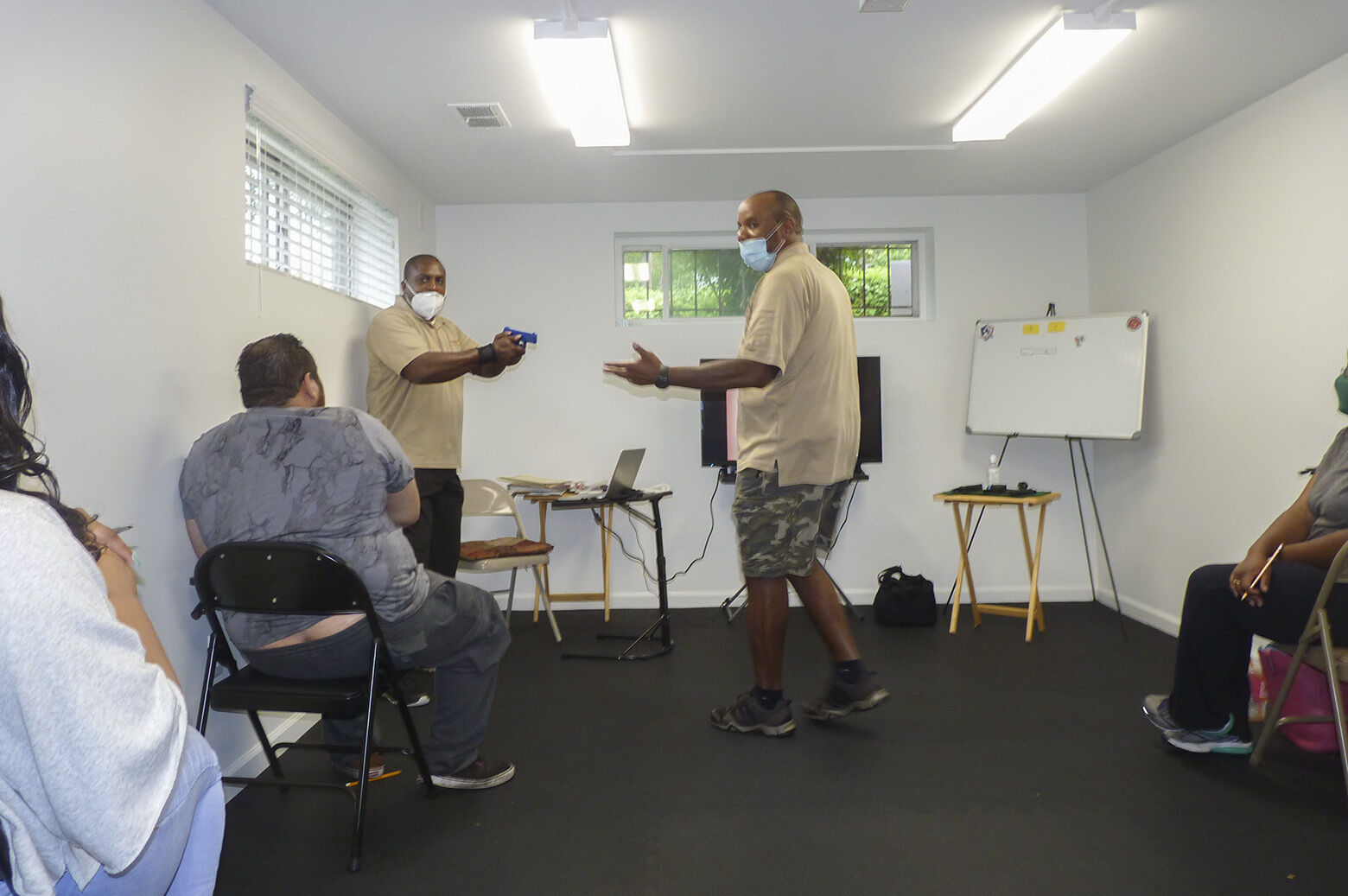
Timothy Lytton, a law professor at Georgia State University and an expert on the gun industry, told The New York Times in April about the increase in gun sales after COVID-19 became widespread in the U.S.
“People are nervous that there’s a certain amount of civil disorder that might come if huge numbers of people are sick and a huge number of institutions are not operating normally,” Lytton had said.
He added that they “may have an anxiety about protecting themselves if the organs of state are starting to erode.”
In the area, many customers are said to have a “just in case” mentality as they walk through the doors to purchase their first firearm.
“Between COVID-19 and the protests going on, a lot of people who were skeptical about purchasing guns beforehand have really come into and accepted purchasing firearms for self-defense,” said Trey Humbert, the owner of Old Washington Armory in Waldorf, Maryland.
Changing complexion of gun ownership
In July, the New York Times talked with a group of African Americans from Oakland, California, to D.C. who became new gun owners in order to feel safe. One woman from Aurora, Colorado, told the Times that guns have served a vital historical role in ensuring the Black struggle for equal rights wouldn’t be stopped, citing how Harriet Tubman and Dr. Martin Luther King Jr. both armed themselves.
That said, having a gun as a Black man or woman invites other problems on its own.
In July 2016, Philando Castile was pulled over by a police officer in the Minneapolis-St. Paul metro area. Castile told the officer that he had a gun on him, which he was licensed to carry, but the officer shot and killed him.
Castile’s death is talked about among members of the National African American Gun Association, according to its president, Philip Smith. The gun group welcomes members of all racial, economic and political backgrounds, and is as intent on keeping an open dialogue about issues related to gun ownership as it is about the right to self-defense.
Smith said the group has spirited but civil conversations about the attitudes of police when responding to a call, and they usually include Black police officers who are members. Sometimes Smith finds himself understanding the wariness the officers bring to the job; other times, he encounters those who think cops can do no wrong no matter how they approach a scene.
Most important to him, though, is avoiding the dismissive attitudes that breed resentment and prevent Black gun ownership from being seen as normal.
“The social narrative out there is that Black folks with guns is a scary thing,” Smith told WTOP. “Our people feel like they’re being victimized unjustly, and even if you don’t agree with that perspective, you have to listen, or be willing to listen.”
But Allan “Doc” Lucas, who runs Lucas Security Services in Northeast D.C. and teaches firearms training, doesn’t see it that way.
A retired D.C. police official and retired Marine, he admitted it has been 15 years since he has been a part of the force. Even then, Lucas said he hasn’t noticed a big difference in how local police treat gun owners based on race, nor is it a topic that comes up in his classes often.
Cedric Barnes told his class that cops who use their weapons wantonly are more likely young and inexperienced than they are looking to intentionally cause harm to suspects.
Measuring how officers react to suspects of different races is the focus of Dr. Rashawn Ray’s Lab Applied Social Science Research, or LASSR (pronounced “laser”), at the University of Maryland.
The associate professor of sociology and Brookings Institute fellow told WTOP that his virtual reality program puts officers through different, often ambiguous, scenarios. Ray has found that when officers enter these unknown situations, they tend to rely on stereotypes to inform their judgments.
For Black suspects, that means officers frequently use harsher language, and in turn are quicker to perceive them as threats. It feeds into a sense of fear and more lenient uses of force during those occasions, Ray said.
That’s true when officers interact with someone who has a gun during those situations.
Again, the scenarios are purposefully ambiguous, so officers are feeling out each suspect’s intentions.
But similar to Smith, from NAAGA, Ray said that when officers see a Black person with a gun, even if rightfully owned, the officers think they shouldn’t have it because they are going to do harm with it.
“Police officers are more likely to be scared when they interact with a Black person,” Ray said. “The virtual reality characters the police officers encounter actually are the same voice — they’re [all voiced by] the same people, we just vary their skin tone. So, we know the only factor altering how officers behave is actually the skin tone of the person.”
LASSR further quantifies these biases through subtle physiological tells — stress levels, heart rates and reaction times in officers, for instance, are heightened around Black suspects.
Ray didn’t see higher homicide rates among African-Americans as a viable explanation about officers’ more aggressive responses.
While he acknowledged the crime rate of 5% in the Black population — compared with 2.5% for whites — Ray said that even affluent, lower-crime, majority Black neighborhoods experience police uses of force at a higher rate than similarly well-off, low-crime neighborhoods that are mostly white.
To Ray, that makes race the X-Factor in how officers respond.
The point of the program, Ray said, is to keep officers in a calmer state so they can make rational choices and allow everyone to leave the interaction safely.
He was not at liberty to say which departments in the D.C. area participate in LASSR, though did note that officers from several large, mid-sized and small departments in the region have taken part in the program.
All about the fundamentals
Back inside Cedric Barnes’ classroom, he covers everything from gun parts to handling a firearm and safety practices. That includes basics such as teaching prospective gun owners to keep their fingers off the trigger until they’re ready to shoot, and only point their gun at something they intend to fire at.
Above all, Barnes makes sure his students know not to break the gun community’s mortal sins: ignorance of how to behave with a weapon, and carelessness about safety protocols.
Range practice takes place at Elite Shooting Sports, in Manassas, Virginia, and the two-day course costs $195.
Business owner Teia Hill, of Maryland, said that with “the pandemic and the other different stuff that’s been happening, it made me be like, ‘I got to get a little protection.’”
She plans to purchase multiple guns for her home and for the two businesses she operates, because she wants to safeguard “what I’ve worked very hard for.” Hill is planning to expand one of her businesses, The Popcorn Bag D.C., and has been working to open up a new storefront for more than two years.
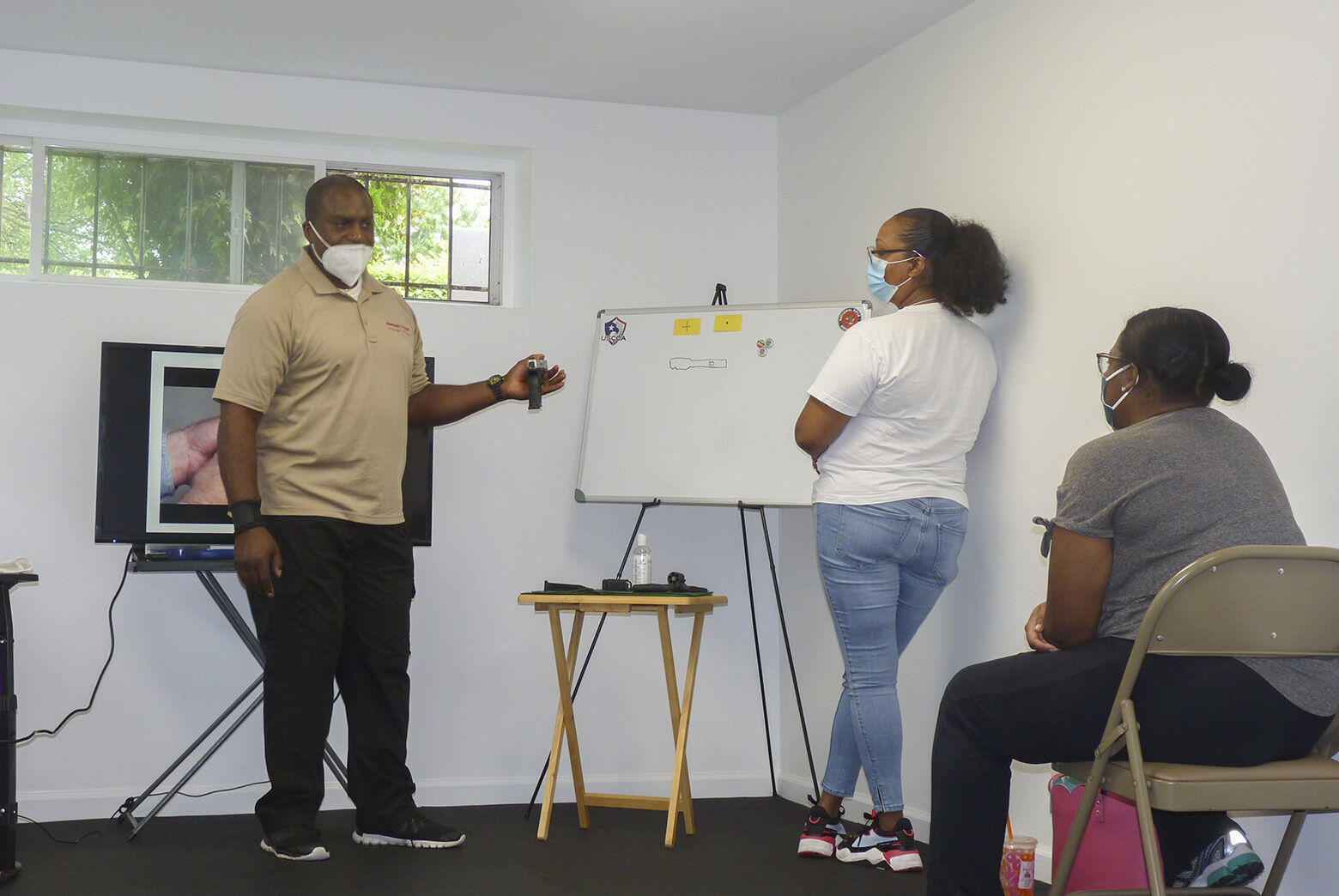
New parents Jose Ortiz, of D.C., and Daryanne Watkins, of Hyattsville, Maryland, said the birth of their child chiefly motivated them to seek out formal training, as the onset of the pandemic and instances of police brutality made them want to rely more on themselves for safety.
“We kind of felt like we just needed to consider the ‘what-ifs.’ And we hoped nothing bad would happen, but just in case, we wanted to be able to know how to use a weapon,” Watkins said.
But before they can consider using a gun, students have to pass a written exam at the end of the eight-hour course, as well as pass Barnes’ “eyeball test.”
Barnes told WTOP afterward that instructors are responsible for filtering out those who they think are “bit in the brain” — either getting a gun for the wrong reasons or not respecting the seriousness of the firearm.
If instructors identify someone who they think shouldn’t be around firearms, their name is reported to the police. That person will then be flagged during a background check if they ever try to purchase a gun.
Understanding the consequences
Owning a gun means being prepared to defend yourself with it. But Barnes also emphasizes practical survival skills in order to avoid such situations. He advocates knowing your surroundings at all times and employing “verbal judo” — de-escalating tense situations by talking it out.
But, sometimes, it’s not a choice. Barnes asked the class whether they would shoot someone who they knew wanted to harm them. They suggested that a warning shot or aiming for something nonlethal, such as an arm or knee, was the best strategy.
He countered by telling them they would only have three seconds to act, and any kind of hesitation or attempt at misdirection would likely get them killed.
The landmark Supreme Court case District of Columbia v. Heller in 2008 affirmed that individuals have a right to self-defense — that the right to bear arms is not reserved solely for those serving in state militias.
Still, situations can be complicated, and could depend on where you live. Each part of the region has its own iteration of the self-defense laws.
For instance, when being threatened in public in Maryland and D.C., a person has a “duty to retreat,” or to make an effort to avoid the conflict (such as leaving the area) until it is no longer safe to do so.
On the other hand, Maryland and Virginia endorse the Castle Doctrine, which enables people to use potentially-deadly force to defend themselves in their homes. However, the use of force in Maryland must still be considered reasonable.
And Virginians are justified in using force to protect themselves if someone commits an overt act that puts them in serious danger, but even that can be hard to distinguish.
In late March, Arlington Smoke Shop was broken into. An employee sleeping in the back room came out and shot at the burglars, wounding one, who was a juvenile. The employee was charged with malicious wounding, reckless handling of a firearm and violation of a protective order. He faces up to 25 years in prison.
Marina Medvin, an Alexandria, Virginia-based attorney who specializes in self-defense law, told Reason that a prior decision in the state’s Supreme Court established that a gun can’t be brandished solely in defense of property, so this employee’s legal defense is fighting an uphill battle.
All jurisdictions require people who use a firearm in self-defense to clear a burden of proof in court and demonstrate that they used only as much force as necessary to quell the threat.
Barnes said that they are accountable for every shot they fire and should only use their gun enough to stop someone. Any extra shots fired, he continued, could be perceived in a court of law as an attempt to kill someone, rather than an attempt to save oneself and one’s family.
“Just having a gun doesn’t make or break you. It doesn’t make you Superman,” Barnes said. “A gun in the wrong hands is evil. A gun in good hands is OK, but at the same time, it’s not, because you still have to answer for those rounds you had used.”


